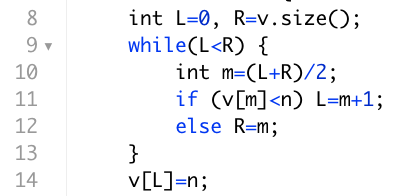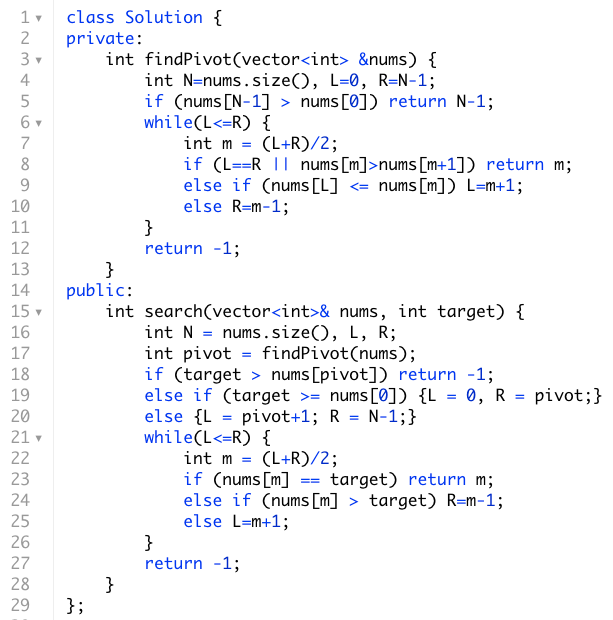Binary Search
June 3, 2021
 Loop condition to check first value larger than the target.
Loop condition to check first value larger than the target.
 Binary Search (first infindPivotthen insearch)
Binary Search (first infindPivotthen insearch)
Introduction
Suppose a group of 100 people are in a line and they are standing from shortest to tallest where the shortest person is on the left side and the tallest person is on the right side. You want to join the line but to do so you must honor the rules of the line and find a position where the person to your left is shorter than you and the person to your right is taller than you and insert yourself the middle. Of course if you are the shortest you can simply go to the far left and if you are the tallest to the right without having to do much work. But like most people, if you are somewhere in between, you need to do some searching.
One approach to find where you belong is to begin from the shortest person and one by one move to the right until the right conditions are satisfied. Although this approach works it is not the most efficient. A better approach would be to find the person at the middle of the line and compare your height to that person. If you are taller than that person you know that you can eliminate searching through all people to the left. Similarly if you are shorter than the middle person you can eliminate searching through the taller half of the line on the right side.
The binary search algorithm works exactly this way. Binary search is used to find an element in a sorted array and to do so the algorithm first finds the middle element and based on the result it eliminates one half of the array which is irrelevant to it. It continues this process until the element is found or it determines the element does not exist.
An Example
Problem Description
An integer array nums is sorted in ascending order and contains distinct values. We rotate the array k positions to the right. Your task is to determine if a value target belongs to the array and return the index at which it's located. If target is not in the array, we should return -1. For example if we had an initial array [1,2,3,4,5] if we rotate it by k=2, it becomes [4,5,1,2,3] and target = 1. In this case target is located at index 3.
The key insight to to solving this problem is to find the pivot element first in O(logN) time doing a binary search. The pivot element is the single element which is greater than the element to its right. If the array is not rotated at all the pivot element is the last element. Then after finding the pivot element we need to determine whether the target value falls to the left or to the right of the array and perform binary search to find it.
The code follows below:
Binary Search (first in findPivot then in search)
Observe in the above example we had *L
Loop condition to check first value larger than the target.
Practice Problems
EASY
MEDIUM
○ Capacity to Ship Packages in N Days
○ Find the Smallest Divisor Given
Threshold
○ Search in Rotated Sorted
Array
○ Minimum Number of Days to Make m Bouquets
○ Longest Increasing Subsequence
○ 4Sum II
HARD
○ Maximum Profit in Job Scheduling
○ Count of Smaller Number After Self